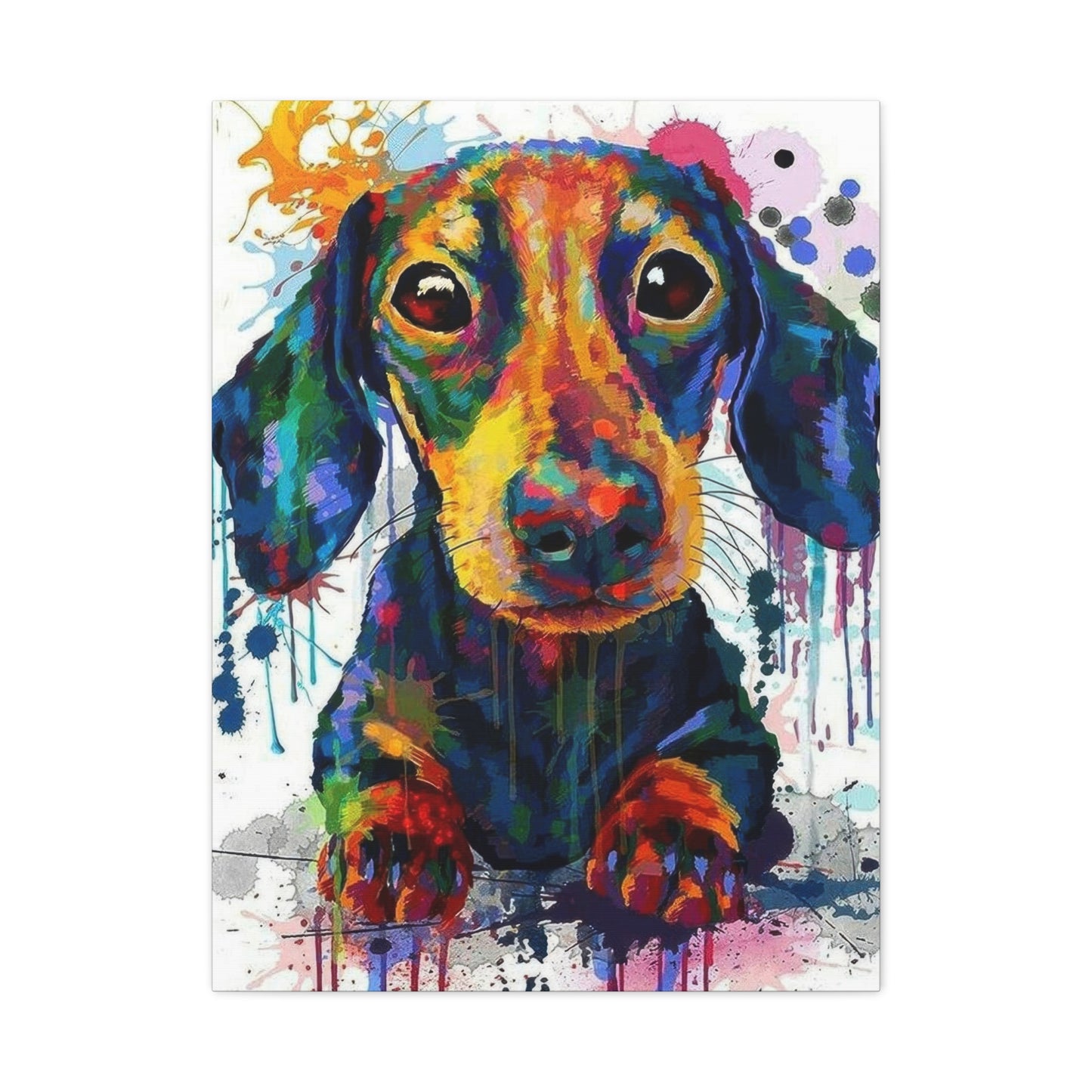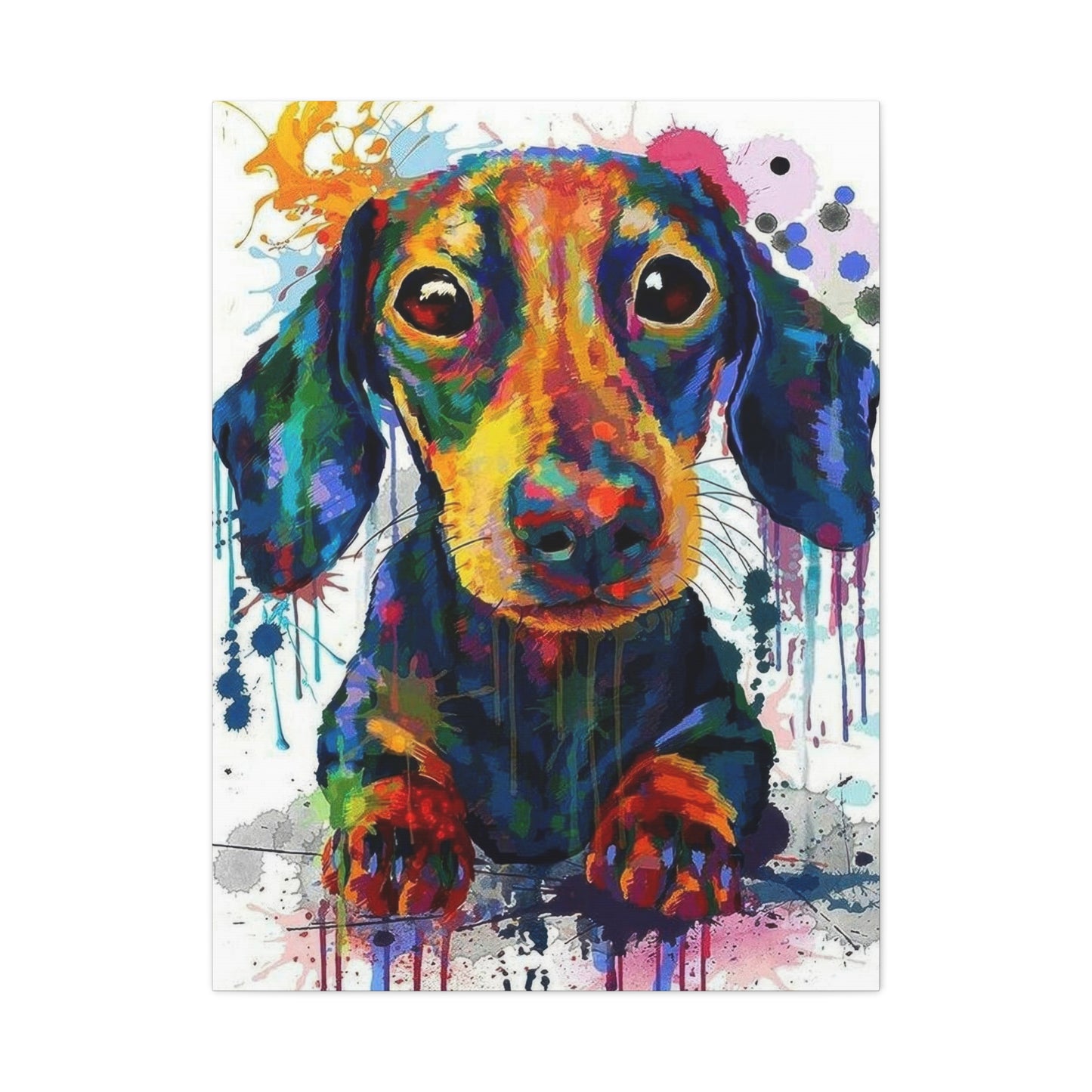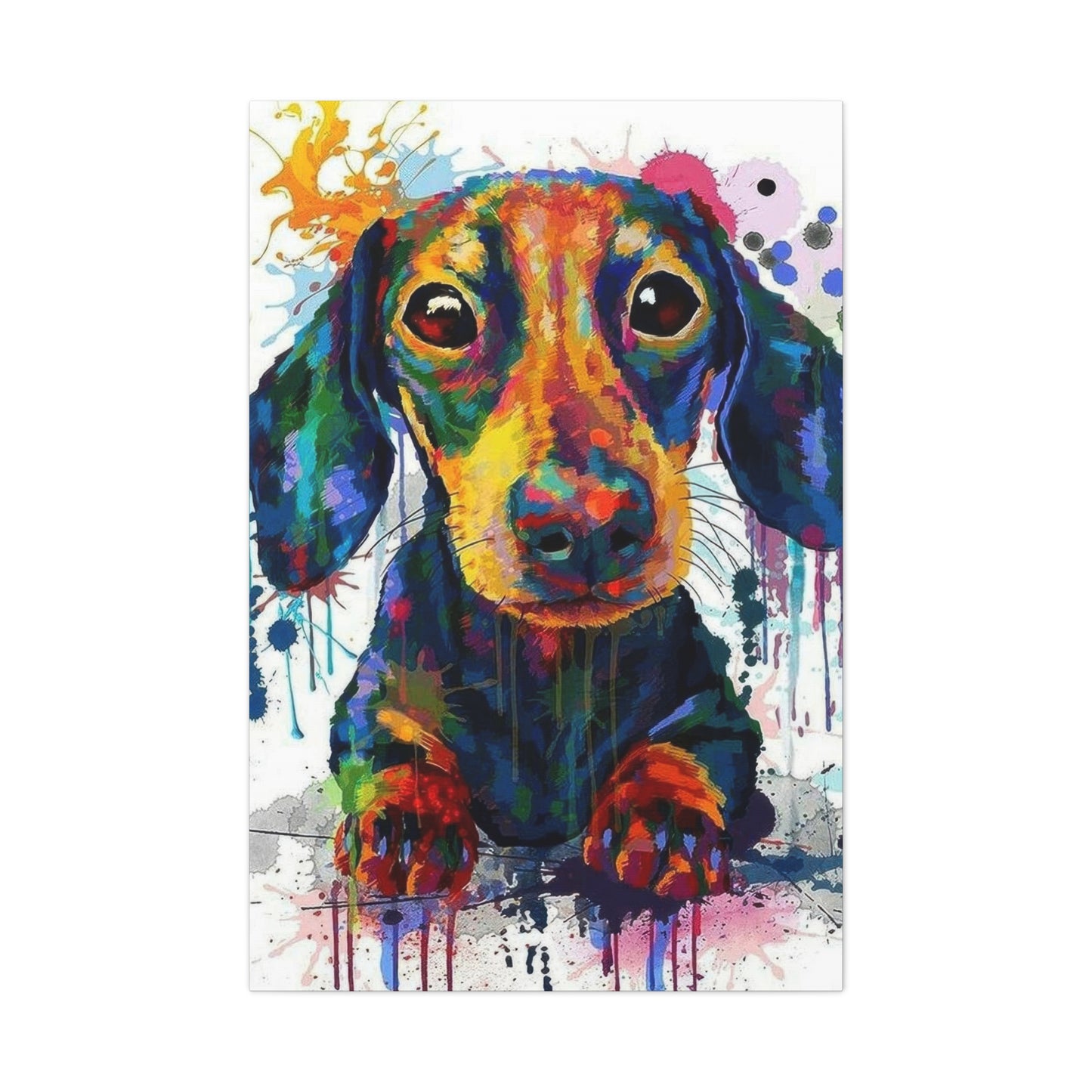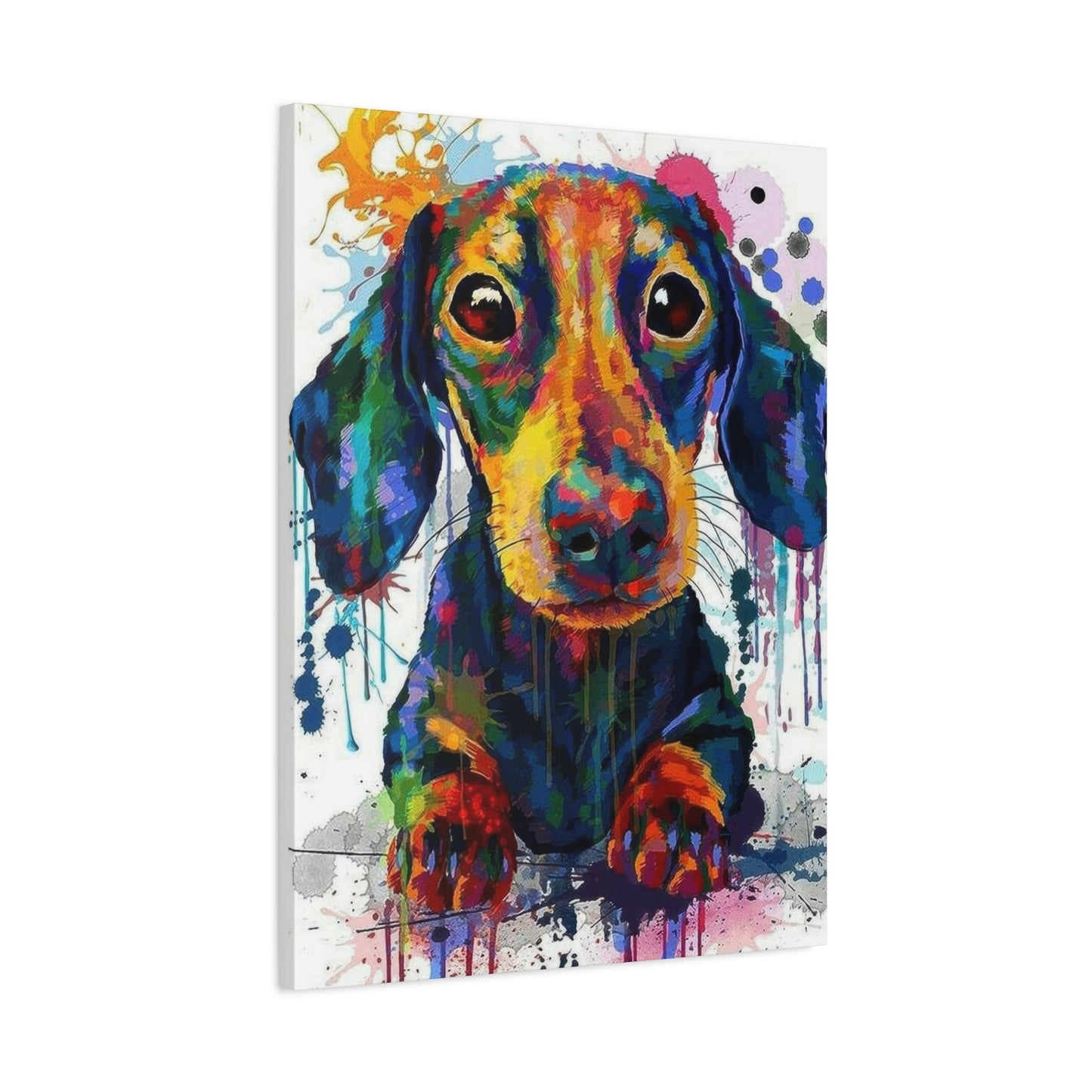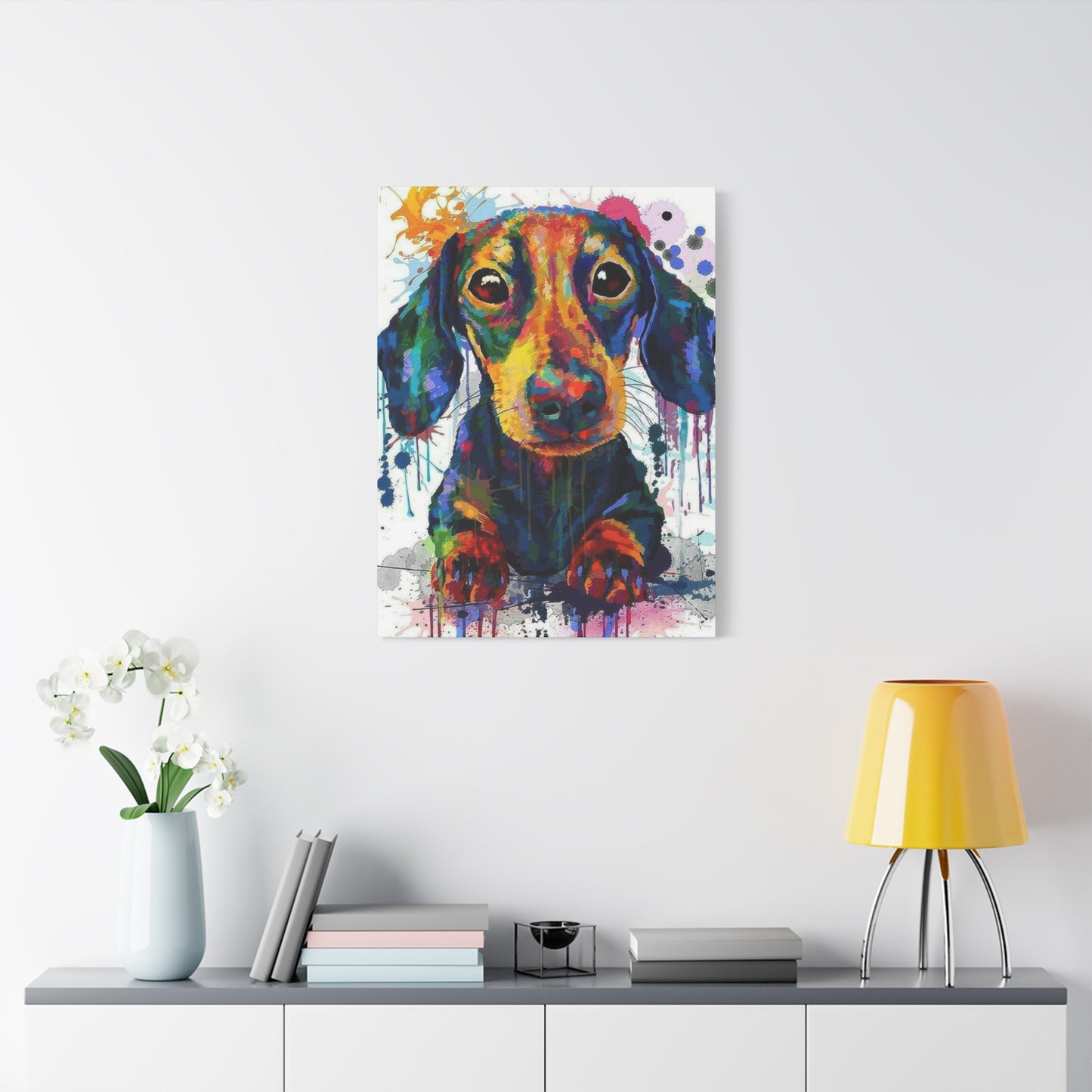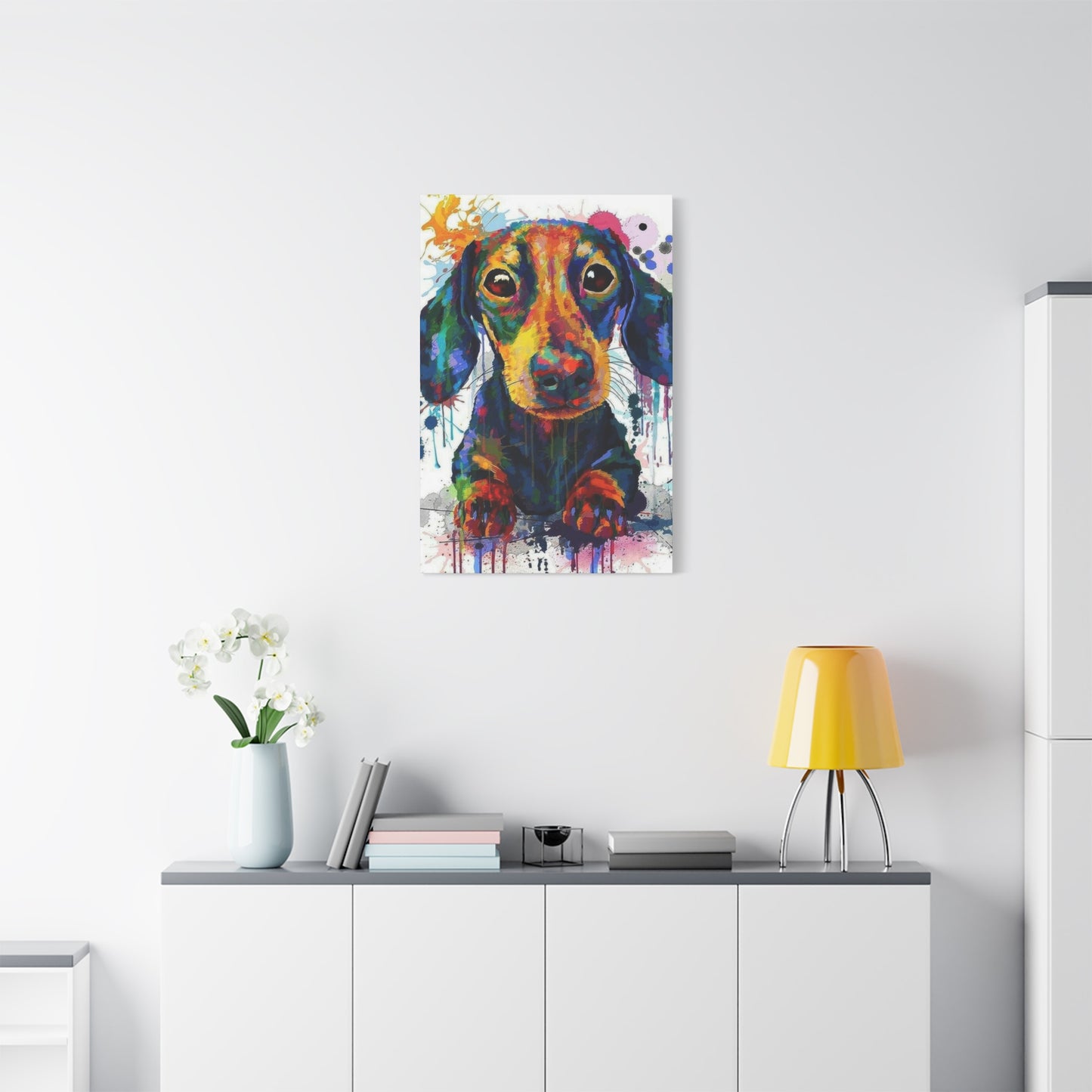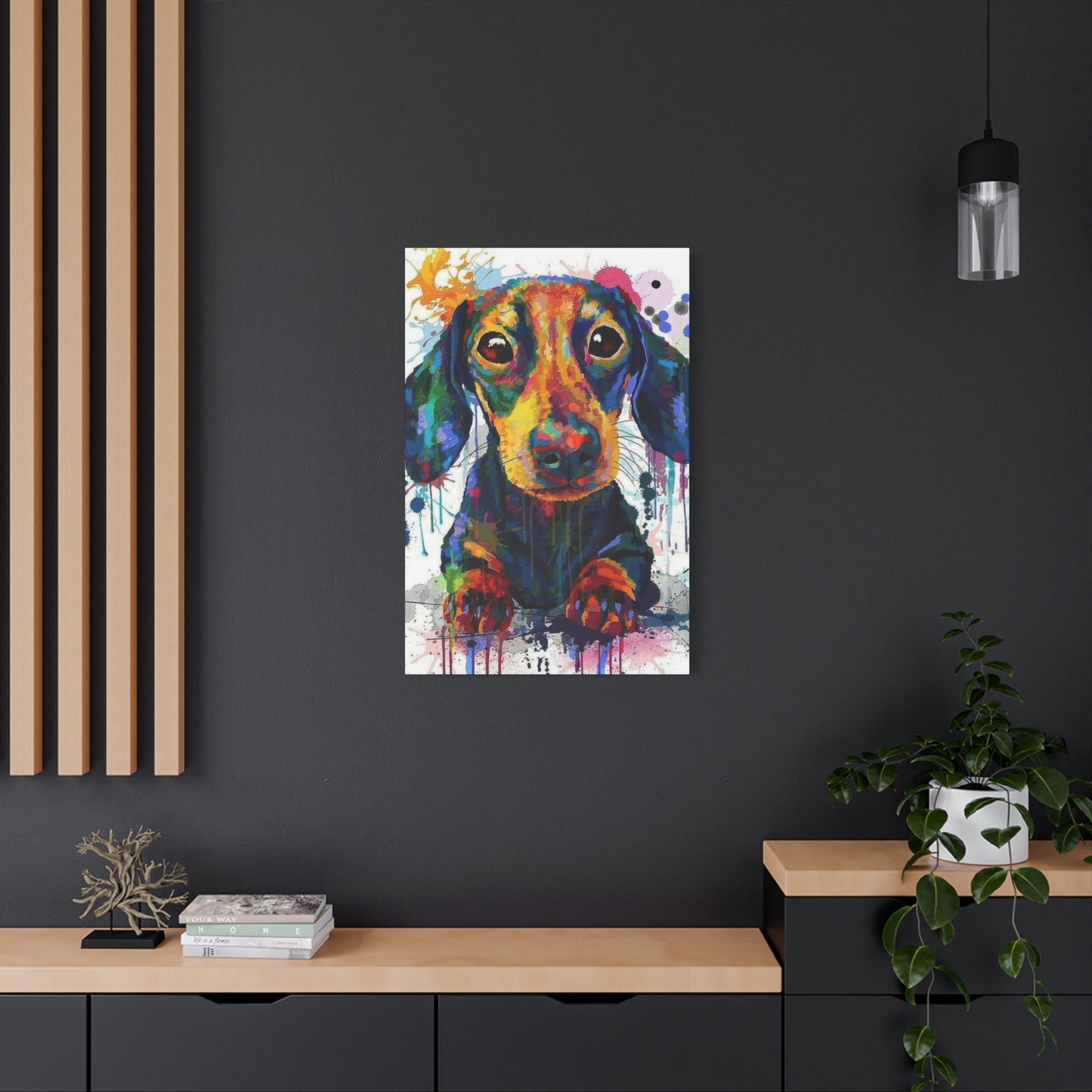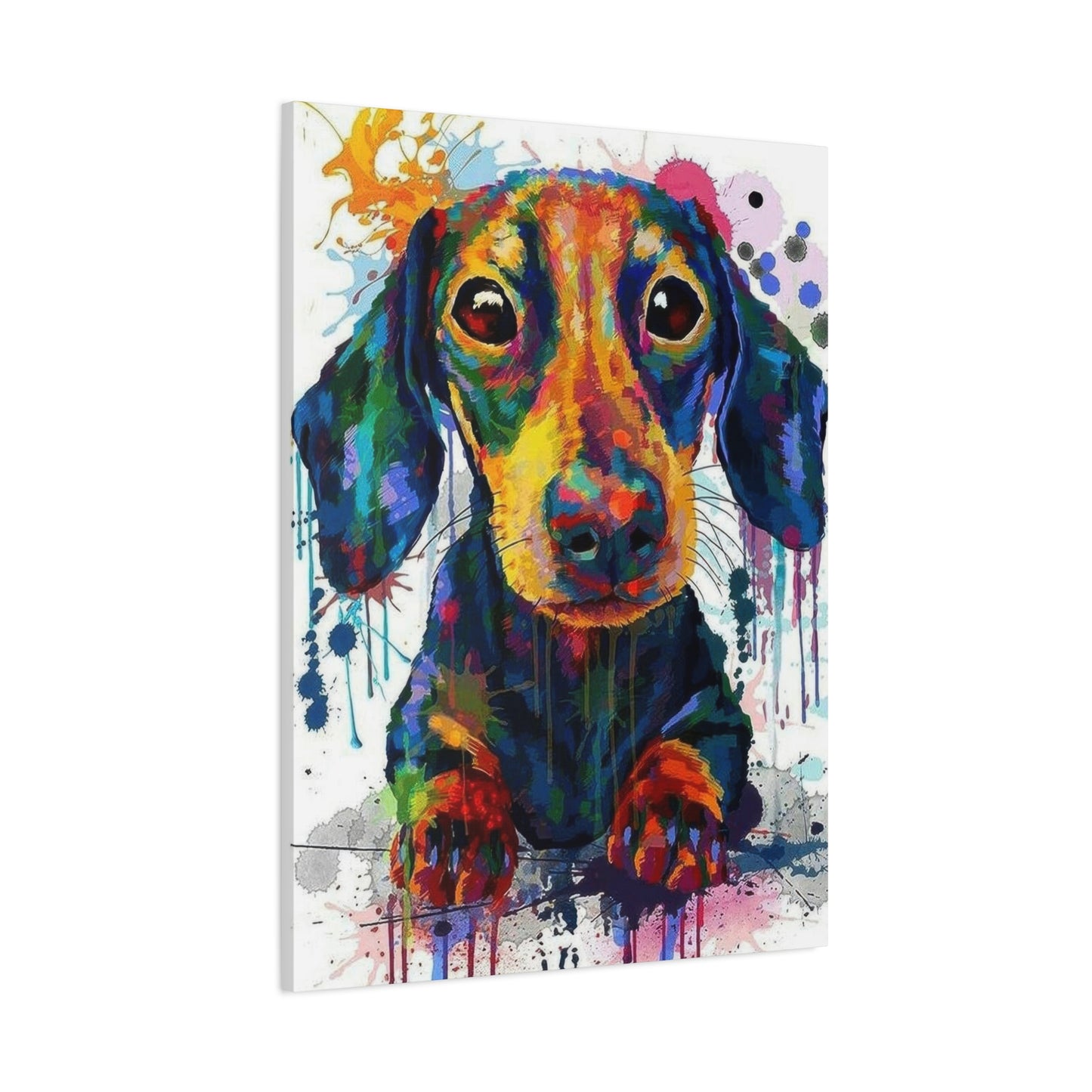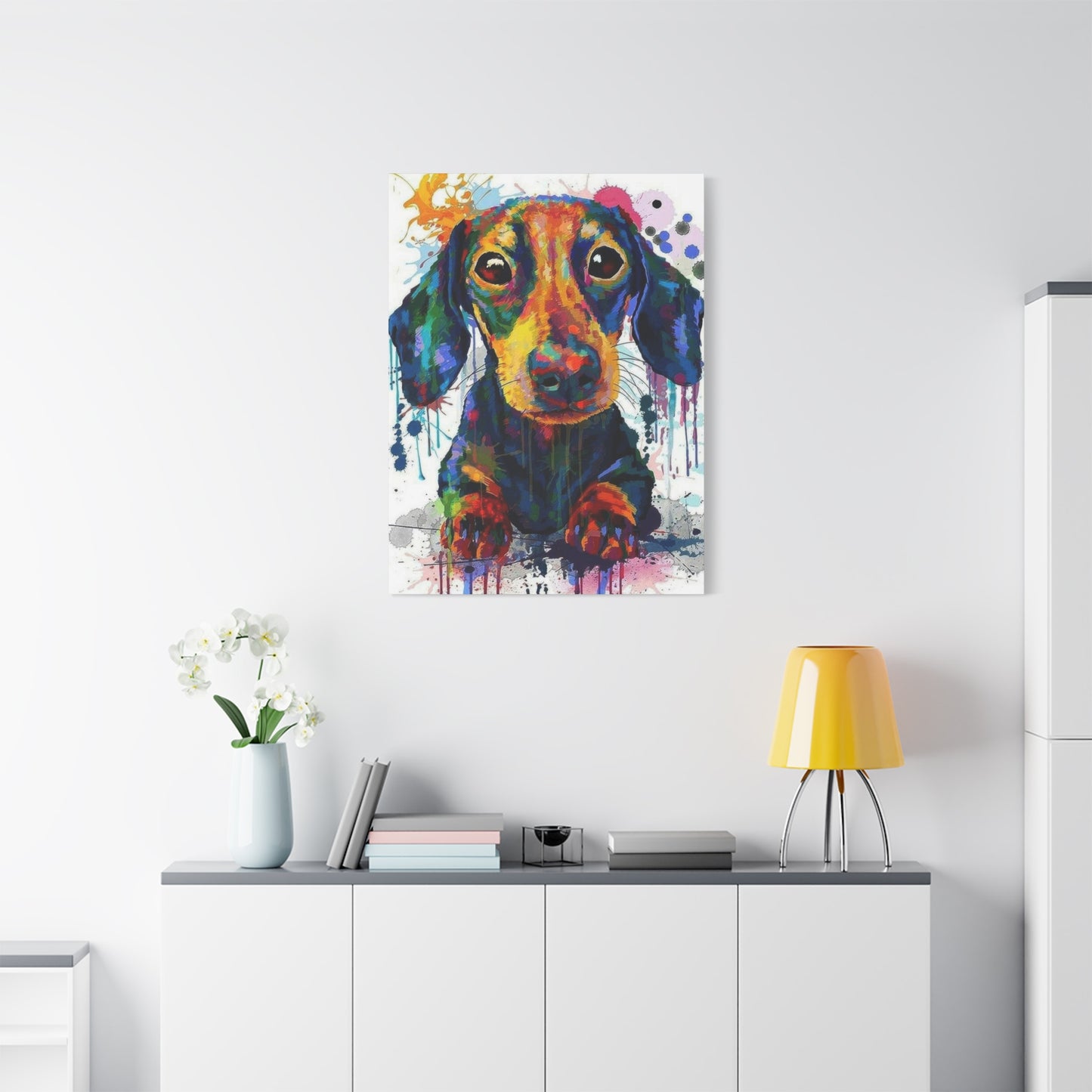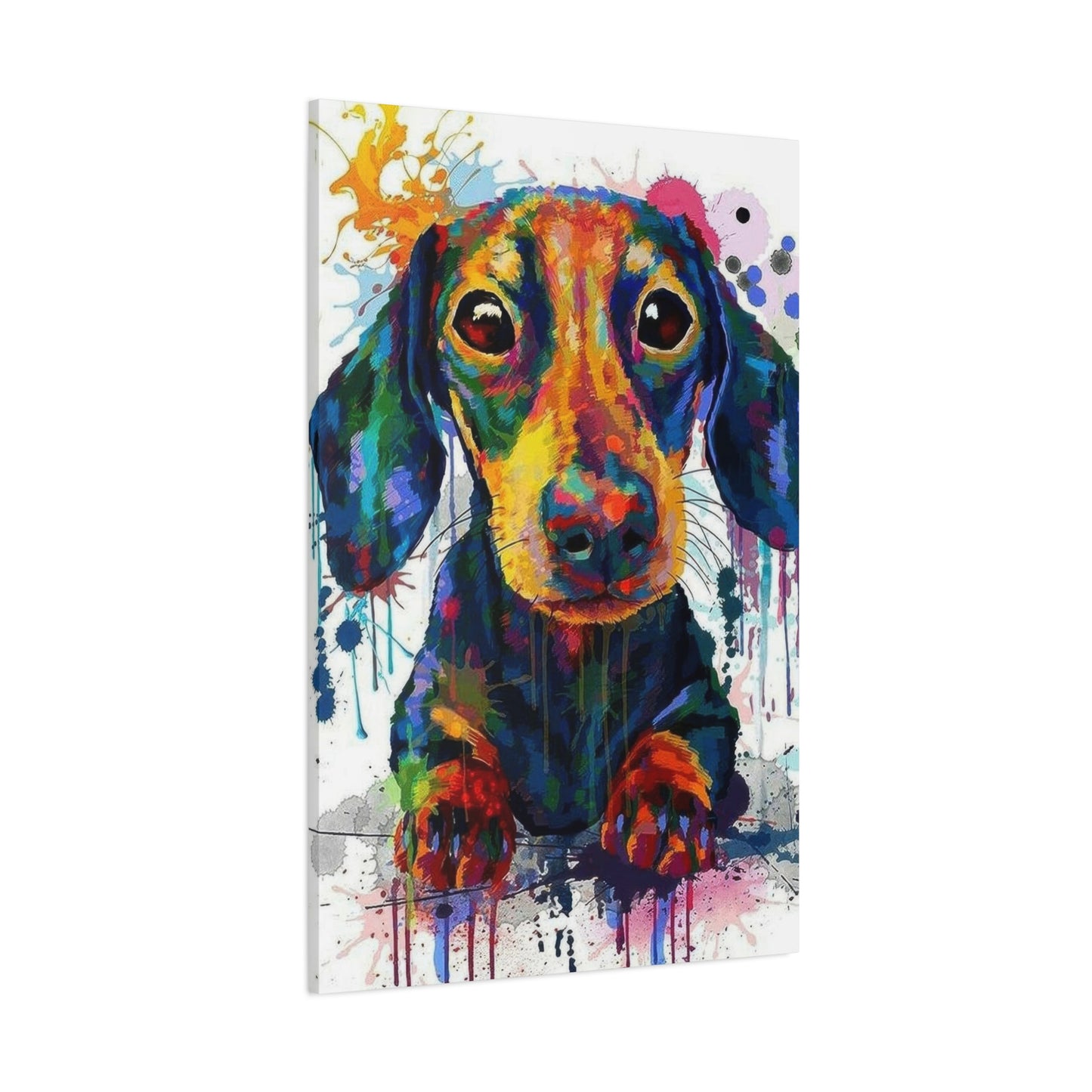Personality on Canvas: How Dachshund Dog Color Wall Art Brings Life to Your Walls
The presence of canine-themed artwork in residential and commercial interiors has experienced remarkable growth over recent years, with one particular breed capturing the hearts and walls of countless enthusiasts worldwide. The distinctive silhouette and endearing personality of the wiener dog have made representations of this beloved breed an increasingly popular choice for those seeking to infuse their environments with warmth, character, and a touch of whimsy. These elongated companions, known for their courageous spirits and loyal dispositions, translate beautifully into visual art forms that range from sophisticated portraiture to vibrant contemporary interpretations.
When considering the addition of canine-themed artwork to your interior environment, understanding the vast array of available options, stylistic approaches, and practical considerations becomes essential for making informed decisions that will enhance your living or working space for years to come. This comprehensive exploration will guide you through every aspect of incorporating these charming representations into your decor, from selecting the perfect piece to maintaining its beauty over time, while offering insights into current trends, creative applications, and the emotional resonance that makes this particular form of pet-inspired artwork so universally appealing.
The journey of transforming blank walls into meaningful expressions of personal taste and affection for these remarkable dogs involves understanding various artistic styles, considering spatial requirements, exploring customization possibilities, and learning proper maintenance techniques. Whether you're drawn to bold, contemporary interpretations or prefer more traditional representations, whether you're decorating an expansive living area or an intimate corner, the world of wiener dog artwork offers endless possibilities for creating spaces that reflect both aesthetic sophistication and genuine emotional connection.
Choosing Dachshund Dog Canvas Prints
Selecting the perfect representation of these distinctive canines for your wall space requires careful consideration of multiple factors that extend beyond simple visual appeal. The decision-making process begins with understanding your personal connection to the breed and how you wish to express that relationship through artistic representation. Some individuals prefer realistic portrayals that capture every detail of the breed's characteristic features, while others gravitate toward stylized interpretations that emphasize personality traits or emotional qualities associated with these beloved companions.
The first consideration when embarking on this selection journey involves evaluating the emotional tone you wish to establish within your space. Representations of these long-bodied dogs can convey vastly different moods depending on artistic treatment. A piece featuring a regal profile against a subdued background creates an atmosphere of dignity and timeless elegance, suitable for formal living areas or professional environments. Conversely, artwork depicting playful poses or humorous scenarios brings lighthearted energy to spaces where relaxation and joy are paramount, making such pieces ideal for family rooms, kitchens, or recreational areas.
Color palette selection plays a crucial role in determining how well a particular piece will integrate into your existing decor scheme. The natural coat colors of these dogs range from rich reds and chocolates to sleek blacks and dappled patterns, and artistic representations may stay faithful to these authentic hues or venture into more imaginative color territories. When choosing artwork, consider whether you want the piece to harmonize with your current color scheme or serve as a striking accent that introduces new tones into the environment. Remember that colors possess psychological properties that influence mood and perception, so selecting artwork with warm tones like reds, oranges, and golds can create inviting, energetic atmospheres, while cooler blues, greens, and purples tend to promote calmness and contemplation.
The artistic medium and technique employed in creating the representation significantly impacts its visual character and emotional resonance. Traditional painting techniques rendered on textile surfaces offer textural depth and a handcrafted quality that appeals to those who value artisanal aesthetics. Digital artwork printed onto material substrates provides crisp detail and vibrant color saturation, making it particularly effective for contemporary interpretations and bold graphic treatments. Mixed media approaches that combine photography with painted elements or incorporate collage techniques create unique visual interest and can bridge traditional and modern design sensibilities.
Size considerations must account for both the physical dimensions of your available wall space and the visual impact you wish to achieve. A piece that appears perfectly proportioned in an online preview may overwhelm a small area or disappear on an expansive wall. Measure your intended installation location carefully, considering not just the wall dimensions but also the furniture arrangements and architectural features that will surround the artwork. As a general guideline, artwork should occupy approximately two-thirds to three-quarters of the wall space above furniture pieces to maintain proper visual balance and proportion.
The frame style and color profoundly influence how the artwork presents itself within your interior. While some printed textile pieces arrive gallery-wrapped with the image continuing around the edges, eliminating the need for traditional framing, others benefit from the finished appearance and protective qualities that frames provide. Black frames create dramatic contrast and work well with contemporary decor schemes, while natural wood frames introduce warmth and organic elements that complement rustic or traditional interiors. White or light-colored frames offer clean, minimalist aesthetics suitable for Scandinavian-inspired spaces or bright, airy environments. Consider also the depth and profile of framing elements, as these details contribute to the overall presence and dimensionality of the displayed artwork.
Quality considerations extend beyond mere aesthetic appeal to encompass durability and longevity. Examine the printing technology employed, as modern giclée printing processes using archival-quality inks and materials ensure that colors remain vibrant and fade-resistant for decades. The substrate material itself matters significantly, with premium options featuring tightly woven, acid-free materials that resist deterioration and maintain structural integrity over time. Stretching methods also impact quality, with properly gallery-wrapped pieces featuring taut surfaces free from ripples or distortions that could detract from visual appeal.
Personal connection and emotional resonance should ultimately guide your selection process. The artwork you choose will become part of your daily visual landscape, and selecting pieces that genuinely speak to your experiences, memories, or aspirations ensures lasting satisfaction with your investment. If you've shared your life with one of these spirited dogs, consider whether you want artwork that reminds you of your specific companion or prefer more generalized representations of the breed. Those who aspire to welcome such a dog into their lives might choose artwork that embodies qualities they admire or characteristics they anticipate enjoying in their future relationship with the breed.
Budget considerations naturally factor into any artwork acquisition, but remember that price often reflects quality, uniqueness, and artistic merit. While affordable options certainly exist and can provide satisfactory results, investing in higher-quality pieces often proves more economical over time, as superior materials and construction ensure longevity and maintained appearance. Consider also the value proposition beyond mere dollars spent—artwork that brings daily joy, sparks conversations, and enhances your living environment provides intangible returns that transcend initial cost considerations.
Colorful Dachshund Wall Art Ideas
The incorporation of vibrant, color-rich representations of these charismatic canines offers exceptional opportunities for transforming ordinary wall spaces into dynamic focal points that energize entire rooms. Contemporary artists have embraced the distinctive silhouette of these long-bodied dogs as a canvas for exploring bold color relationships, experimental techniques, and expressive approaches that push beyond traditional pet portraiture into realms of fine art that happen to feature recognizable canine subjects.
Rainbow-spectrum interpretations present these beloved dogs through kaleidoscopic color treatments that fragment the figure into geometric sections, each rendered in different hues drawn from across the color wheel. This approach transforms the familiar form into an explosion of visual energy that commands attention and injects playful sophistication into contemporary interiors. Such pieces work exceptionally well in spaces embracing eclectic design philosophies or modern environments that benefit from strategic injection of color and personality. The psychological impact of surrounding yourself with such vibrant imagery can elevate mood, stimulate creativity, and create spaces that feel alive with positive energy.
Sunset and sunrise color schemes offer another compelling direction for chromatic exploration, bathing the canine subject in warm gradients that transition from deep purples and magentas through fiery oranges and yellows. These compositions evoke emotional responses associated with natural beauty and transitional moments, bringing contemplative warmth to spaces while maintaining visual interest through sophisticated color relationships. Such pieces often incorporate silhouette treatments where the dog's form appears in profile against the gradient background, creating striking contrast between figure and ground while allowing the color transitions to flow uninterrupted across the composition.
Neon and fluorescent color applications bring electrifying energy to representations of these spirited dogs, often employing techniques reminiscent of street art aesthetics or nightclub signage. Brilliant pinks, electric blues, acid greens, and hot oranges combine to create visually arresting images that practically glow with intensity. This approach proves particularly effective in entertainment spaces, game rooms, home bars, or any environment where bold, unapologetic visual statements align with the intended atmosphere. The high-contrast, high-saturation nature of such artwork ensures it serves as an unmistakable focal point that anchors the room's visual hierarchy.
Watercolor-inspired color treatments offer a softer, more ethereal approach to chromatic interpretation, with hues bleeding and blending into one another in ways that suggest spontaneity and artistic freedom. These pieces often feature the dog's form emerging from or dissolving into washes of color that spread across the composition in organic, unpredictable patterns. The effect combines recognizable subject matter with abstract expressionist sensibilities, creating artwork that appeals to those who appreciate both representational clarity and painterly interpretation. Such pieces introduce color in ways that feel gentle and harmonious rather than aggressive, making them suitable for bedrooms, reading nooks, or other spaces where tranquility matters.
Complementary color schemes built around opposing hues on the color wheel create vibrant tension and visual excitement while maintaining compositional harmony through the relationship between carefully selected colors. An orange-bodied dog against a rich blue background, or a purple-rendered subject set against yellow-toned surroundings, demonstrates how complementary relationships generate visual energy through simultaneous contrast. These scientifically grounded color interactions produce artwork that feels both dynamic and balanced, sophisticated yet accessible, making such pieces versatile enough for various interior applications.
Monochromatic color explorations in unexpected hues present the breed through single-color treatments that depart from natural coat colors entirely. An entirely turquoise or coral or lavender dog creates surprising visual interest through the unexpected application of a single hue across the familiar form. These pieces often incorporate tonal variations within the chosen color family, using lighter tints for highlights and deeper shades for shadows, creating volume and dimension while maintaining the unified color statement. Such artwork bridges the gap between pet portraiture and color field painting, appealing to those who appreciate conceptual approaches to familiar subjects.
Gradient effects flowing across the canine form create mesmerizing transitions that guide the eye through continuous color evolution. A dog whose head begins in deep indigo tones and gradually shifts through the spectrum to emerge in warm golden hues at the tail creates a sense of movement and transformation within a static image. These gradient treatments can be applied horizontally, vertically, or diagonally across the composition, with each directional choice affecting how viewers visually navigate the piece and experience the color relationships.
Metallic accent integration introduces reflective elements that catch and interact with ambient light, adding dimension and luxurious qualities to colorful representations. Gold, silver, copper, or iridescent metallic applications might highlight specific features, outline the figure, or create background elements that shimmer and shift as viewing angles and lighting conditions change throughout the day. This technique elevates colorful artwork into the realm of decorative art objects that function almost sculpturally in their interaction with environmental light.
Pattern integration within colorful treatments adds another layer of visual complexity and interest. The dog's form might be filled with repeated geometric shapes, floral motifs, paisley patterns, or abstract designs, each rendered in different colors that create a tapestry effect within the recognizable silhouette. This approach draws inspiration from folk art traditions while maintaining contemporary relevance through bold color choices and graphic clarity, resulting in pieces that feel both culturally rich and thoroughly modern.
Seasonal color palettes offer opportunities to rotate artwork or select pieces that resonate with specific times of year. Autumn-themed pieces featuring warm browns, russets, golds, and burgundies create cozy warmth during cooler months, while spring-inspired artwork bursting with fresh greens, soft pinks, and sky blues brings renewal energy as seasons change. This approach allows enthusiasts to maintain visual freshness in their spaces through strategic artwork rotation aligned with natural cycles and seasonal moods.
Decorating with Dachshund Canvas Art
Integrating representations of these distinctive canines into comprehensive interior design schemes requires thoughtful consideration of placement, context, and relationships between the artwork and surrounding elements. Successful decoration transcends simply hanging a picture on a wall; it involves creating visual dialogues between the art, architecture, furnishings, and accessories that collectively define a space's character and functionality.
Living room applications offer particularly rich opportunities for showcasing canine-themed artwork as these central gathering spaces naturally accommodate larger pieces and collections that can serve as conversation catalysts. Positioning such artwork above the sofa creates a traditional focal point that anchors seating arrangements while providing visual interest for both room occupants and guests. When hanging art above furniture, maintain approximately six to eight inches of space between the furniture top and the artwork's lower edge to establish proper visual connection without creating awkward gaps or cramped relationships. Consider the sofa's color and texture when selecting artwork, seeking either harmonious relationships that create cohesive visual flow or strategic contrast that makes both elements more striking through juxtaposition.
Dining room installations transform meal spaces into more personalized, engaging environments that reflect the homeowner's passions and aesthetic sensibilities. Artwork positioned on the wall behind the dining table creates a backdrop for gatherings that adds visual richness without interfering with the practical functions of the space. Since dining areas often feature pendant lighting fixtures, ensure that artwork placement accounts for these elements, either positioning the piece to one side of hanging lights or selecting dimensions that allow the art to extend beyond the fixture's width, creating deliberate compositional relationships between functional and decorative elements.
Bedroom applications benefit from carefully considered artwork that contributes to the restful, personal character appropriate for private sleeping quarters. Above the headboard represents the most common placement location, creating a visual focal point that balances the bed's substantial physical presence while being visible from the doorway but not directly in the sleeper's line of sight when lying down. Alternatively, artwork positioned on walls perpendicular to the bed can be enjoyed from the sleeping position, providing contemplative viewing opportunities during quiet moments. Color selection matters particularly in bedroom contexts, with consideration given to how hues affect mood and whether the artwork's palette promotes the calming atmosphere conducive to rest or introduces energizing elements more suitable for morning motivation.
Kitchen and dining nook installations acknowledge that these spaces have evolved beyond purely functional roles to become social hubs where families gather and casual entertaining occurs. Smaller-scale pieces work well in kitchens where wall space often competes with cabinetry, windows, and appliances. Position artwork in areas protected from direct exposure to cooking heat, moisture, and grease while ensuring visibility from primary vantage points like the breakfast table or kitchen island. The inherent warmth and approachability of these charismatic dogs makes them particularly suitable for spaces associated with nourishment and gathering, where their presence reinforces feelings of home and comfort.
Entryway and hallway applications make powerful first impressions while solving the design challenge of decorating transitional spaces that often feature limited floor space but generous wall expanses. A striking representation of these spirited dogs immediately communicates the homeowner's personality and interests to arriving guests while transforming potentially bland corridors into genuine design moments. In narrow hallways, consider the viewing angles and distances from which artwork will be seen, potentially selecting vertical orientations or smaller-scale pieces that work better in confined spaces than large horizontal formats that might overwhelm limited dimensions.
Bathroom applications, while less conventional, offer opportunities for injecting personality into spaces often relegated to purely functional status. Smaller pieces positioned away from direct water exposure can transform powder rooms into charming spaces that surprise and delight visitors. The juxtaposition of fine art with utilitarian spaces creates memorable contrasts that demonstrate design confidence and willingness to break conventional rules about where artwork belongs.
Home office installations acknowledge that work environments benefit from personal touches that make them feel less institutional and more connected to the individual's life and values. Positioning artwork within the field of vision from the desk creates opportunities for brief mental breaks and emotional refreshment during intensive work sessions. For those who participate in video calls, consider whether artwork visible in the background of your video frame presents the professional image you wish to project, with tasteful pet-themed art often striking appropriate balances between personality and professionalism.
Stairway wall galleries transform functional vertical circulation spaces into dynamic display areas that reward the journey between floors with visual engagement. The ascending or descending arrangement of multiple pieces creates rhythm and movement that complements the physical action of climbing or descending stairs. Ensure that artwork heights maintain consistent relationships with the stairway's slope, typically aligning the center point of each piece with an imaginary diagonal line that parallels the stair angle.
Children's room applications benefit from the approachable, friendly nature of these beloved dogs, with artwork contributing to spaces that feel secure, playful, and personalized. Involve children in selection processes when age-appropriate, as personal investment in the chosen artwork increases their connection to their space. Position pieces at heights that allow children to view and appreciate them from their perspective rather than adhering strictly to adult eye-level conventions, and prioritize secure mounting methods that ensure safety in active play environments.
Nursery installations require particular attention to color psychology and emotional tone, with softer interpretations and gentler color palettes often proving most suitable for infant environments. The presence of friendly animal imagery contributes to the warm, nurturing atmosphere parents wish to establish while avoiding overstimulation through excessively busy or high-contrast designs. As children grow, artwork selections can evolve to reflect developing personalities and interests, with the transition from nursery to bedroom offering natural opportunities for refreshing the space's visual character.
Playful vs. Elegant Dachshund Styles
The remarkable versatility of these distinctive canines as artistic subjects allows for interpretations spanning the full spectrum from whimsical humor to sophisticated refinement, with each approach serving different aesthetic goals and interior contexts. Understanding the characteristics that define these contrasting styles enables informed selections that align artwork with the intended atmosphere and design philosophy of each space.
Playful interpretations embrace the inherent charm and occasionally comical aspects of these long-bodied companions, celebrating their spirited personalities through artistic treatments that prioritize entertainment and emotional warmth over formal sophistication. Such pieces often feature exaggerated proportions that emphasize the breed's distinctive elongated body structure, creating caricature-like representations that affectionately celebrate their unique physique. Bright, saturated colors predominate in playful styles, with artists freely departing from naturalistic palettes to explore rainbow hues, unexpected color combinations, and bold contrasts that immediately signal the lighthearted intent.
Scenarios depicted in playful artwork frequently show these dogs engaged in humorous activities or exhibiting endearing behaviors that resonate with anyone familiar with the breed's personality quirks. Representations might show determined digging poses with dirt flying, exuberant running with ears flapping and bodies fully extended, or attentive begging stances with expressive eyes that seem to plead for treats or attention. These narrative elements transform static images into storytelling moments that bring smiles and warmth to viewers, creating emotional connections that transcend mere visual appreciation.
Artistic techniques employed in playful styles often incorporate elements from cartoon traditions, pop art movements, or folk art practices that prioritize accessibility and immediate emotional response over technical virtuosity or conceptual complexity. Thick outlines, simplified forms, and graphic clarity ensure that playful pieces communicate their character instantly, even from across a room. Text elements might be integrated into compositions, adding humorous captions, witty observations about the breed, or playful typography that reinforces the lighthearted tone. These pieces function almost as visual jokes or affectionate tributes that celebrate the joy these dogs bring to their humans' lives.
Elegant interpretations take decidedly different approaches, treating these noble hunters as subjects worthy of the same refined artistic consideration typically reserved for more conventionally dignified breeds. These sophisticated representations emphasize grace, composure, and aristocratic bearing, often featuring profile views that highlight the breed's clean lines and balanced proportions. Color palettes in elegant styles tend toward restraint, employing sophisticated neutrals, muted tones, or carefully selected accent colors that create harmonious rather than jarring visual relationships.
Classical portraiture traditions inform many elegant interpretations, with these dogs posed against simple, uncluttered backgrounds that focus attention entirely on the subject without distraction. Lighting treatments in such pieces often employ dramatic chiaroscuro techniques that model form through subtle gradations between light and shadow, creating volume and dimension that lend gravitas and presence to the subject. The overall effect evokes museum-quality fine art that happens to feature canine subjects, suitable for formal living spaces, professional offices, or any context where sophisticated restraint defines the design approach.
Photographic realism represents another avenue for elegant representation, with highly detailed renderings that capture every nuance of coat texture, eye depth, and anatomical accuracy. These pieces demonstrate technical mastery while celebrating the genuine beauty of the breed without resorting to anthropomorphization or caricature. The discipline required to achieve such realism signals seriousness of artistic intent, elevating the subject through the evident care and skill invested in its representation.
Monochromatic treatments contribute to elegant aesthetics by removing the potentially distracting element of color, allowing form, composition, and tonal relationships to dominate visual experience. Black and white representations, sepia-toned images, or single-color interpretations create timeless qualities that transcend trendy color preferences while demonstrating sophisticated restraint. Such pieces integrate seamlessly into diverse interior schemes precisely because their limited palettes avoid potential color clashes while maintaining strong visual presence through form and contrast alone.
Minimalist approaches to elegant representation reduce the subject to essential elements, eliminating unnecessary details to create streamlined interpretations that emphasize iconic silhouettes and fundamental characteristics. Clean lines, ample negative space, and thoughtful composition create breathing room that prevents visual clutter while allowing the subject's form to communicate with maximum clarity and impact. These refined pieces appeal to those whose design philosophies prioritize quality over quantity and restraint over excess.
The choice between playful and elegant styles ultimately reflects the decorator's intention for the space and the emotional response they wish to evoke. Playful pieces bring levity, warmth, and approachable character to informal spaces where relaxation and joy take priority. Elegant interpretations elevate spaces through sophisticated visual statements that demonstrate refined taste and appreciation for artistic merit. Many enthusiasts discover that their homes benefit from both approaches applied in different contexts, with playful pieces energizing casual family areas while elegant selections bring polish to formal entertaining spaces or professional environments.
Transitional styles that blend playful and elegant elements offer middle-ground approaches for those who appreciate aspects of both extremes. A piece might feature realistic rendering combined with unexpected color treatments, or maintain compositional elegance while incorporating subtle humorous elements. These hybrid approaches demonstrate sophisticated playfulness or accessible refinement, proving particularly versatile for homes embracing transitional design philosophies that bridge traditional and contemporary aesthetics.
Large Dachshund Prints for Statement Walls
Oversized representations of these charismatic canines create commanding focal points that anchor entire rooms, transforming substantial wall expanses into dramatic design statements that immediately capture attention and establish spatial hierarchy. The decision to feature large-scale artwork requires careful consideration of multiple factors including room dimensions, ceiling heights, viewing distances, and the relationship between the artwork and surrounding architectural and decorative elements.
Scale psychology plays a crucial role in how large artwork affects spatial perception and emotional response. Substantial pieces create immediate visual impact that can make rooms feel more deliberately designed and thoughtfully curated rather than casually assembled. The bold commitment required to feature large-scale imagery demonstrates design confidence that visitors respond to, often unconsciously registering the space as more sophisticated and intentional than environments filled with smaller, more tentative decorative choices. However, scale must be balanced against available space, as oversized pieces in undersized rooms can create claustrophobic feelings rather than the intended impressive effect.
Proportional relationships between artwork and furniture require mathematical consideration to achieve visual harmony. The long-standing design principle suggests that artwork positioned above a sofa should span approximately two-thirds to three-quarters of the furniture's width, creating sufficient visual connection without either overwhelming the furniture or appearing insignificant in comparison. For a standard ninety-six-inch sofa, this guideline suggests artwork spanning roughly sixty-four to seventy-two inches in width, though these numbers serve as starting points rather than absolute rules, with adjustments made based on specific room characteristics and design goals.
Ceiling height considerations significantly impact optimal artwork dimensions and placement positions. Standard eight-foot ceilings limit vertical artwork dimensions and require careful height positioning to avoid pushing pieces too high or hanging them too low. Ten-foot or higher ceilings accommodate more generous vertical dimensions and allow for artwork placement that creates more dramatic effects by extending further up the wall. When working with substantial ceiling heights, resist the temptation to position artwork too high, maintaining the principle that center points should align approximately with average human eye level, typically around fifty-seven to sixty inches from the floor.
Room function influences appropriate artwork scale selections, with formal spaces often benefiting from larger pieces that match their ceremonial importance, while intimate spaces might feel overwhelmed by excessive scale. Living rooms, dining rooms, and primary bedroom suites naturally accommodate substantial artwork that matches their significance within the home hierarchy. Conversely, secondary bedrooms, bathrooms, and utility spaces typically function better with more modest artwork scales that suit their subsidiary roles and smaller physical dimensions.
Subject treatment within large-scale formats requires careful consideration of how size affects visual impact and emotional response. Close-up portraits that fill the frame with the dog's face create intense, personal connections that can feel almost confrontational in their directness, commanding attention and emotional engagement. Full-body representations showing the complete figure allow viewers to appreciate the breed's distinctive proportions and characteristic stance while creating more breathing room within the composition. Environmental settings that place the subject within landscape or interior contexts provide narrative elements and compositional complexity that reward extended viewing and discovery of details that might be missed in initial encounters.
Triptych and multi-panel configurations offer alternative approaches to filling substantial wall areas while creating visual interest through segmentation and relationship between connected but separate elements. A three-panel representation might show the same dog from different angles, creating a rotating view effect, or depict three different individuals of the breed, celebrating variety within breed type. The spaces between panels create natural breaks that prevent overwhelming visual density while allowing each segment to be appreciated individually and as part of the larger composition. Ensure consistent spacing between panels, typically maintaining two to three inches of separation that clearly delineates individual elements without creating awkward gaps.
Color impact intensifies at large scales, with hues that seem pleasantly vibrant in small formats potentially overwhelming spaces when expanded to wall-dominating dimensions. Preview how color decisions will translate to larger scales by viewing samples at increased sizes or in full-room mockups before committing to substantial pieces. Bold, saturated colors can create exciting, energetic environments but require confident handling and thoughtful integration with the room's overall palette. Conversely, more subdued color schemes in large formats create impressive presence through scale alone without competing aggressively with other interior elements.
Installation considerations for large pieces require careful attention to structural support and proper hanging hardware. Substantial artwork possesses considerable weight that demands appropriate wall anchors, hanging systems, and installation techniques. Locate wall studs whenever possible for the most secure mounting, or use heavy-duty wall anchors rated for weights exceeding the actual piece plus a safety margin. Professional installation services often prove worthwhile for particularly large or valuable pieces, ensuring proper handling, precise leveling, and secure mounting that protects both the artwork and the wall surface.
Lighting design becomes increasingly critical for large-scale pieces that serve as room focal points worthy of proper illumination. Picture lights mounted directly to frames or positioned on the wall above artwork provide dedicated illumination that highlights the piece while creating ambient lighting effects that enhance evening atmospheres. Track lighting systems offer flexibility to adjust beam angles and intensities while accommodating future artwork changes without requiring new hardwired fixtures. Natural lighting considerations include awareness of direct sunlight exposure that could cause fading over time, potentially necessitating window treatments or strategic positioning that protects artwork while maintaining room brightness.
Statement walls featuring oversized artwork often benefit from simplified surrounding treatments that allow the art to dominate without competition. Consider painting the wall in a complementary or contrasting color that enhances the artwork without replicating its hues exactly, creating sophisticated relationships between background and foreground elements. Minimize competing decorative elements on the same wall, avoiding the temptation to fill every available space with additional items that would dilute the statement piece's impact and create visual confusion.
Small Dachshund Canvas for Cozy Spaces
Intimate artwork scaled for modest spaces brings charm and personality to areas that might be overlooked in broader decorating schemes, proving that effective design considers every part of the home regardless of size or visibility. Small-format representations of these beloved dogs offer solutions for decorating challenges presented by powder rooms, reading nooks, hallway niches, office cubicles, and other locations where physical constraints prevent large-scale installations.
Proportional appropriateness ensures that artwork suits the spaces it occupies, with smaller pieces often appearing more harmonious and intentional in compact areas than undersized versions of large formats that seem diminished and apologetic. A thoughtfully selected small piece commands its territory effectively, creating visual interest without overwhelming limited square footage or competing with the space's functional requirements. The key lies in selecting artwork that appears deliberately sized for its context rather than giving the impression of being a placeholder until something larger can be acquired.
Grouped arrangements of multiple small pieces create visual impact that individual small works might struggle to achieve independently. Three to five coordinated pieces arranged in geometric patterns or organic clusters generate collective presence while maintaining individual interest that rewards closer examination. Thematic coherence among grouped pieces might come from consistent color schemes, related subject treatments, or unified artistic styles that create visual conversations between works. Alternatively, deliberate variety among grouped pieces can create dynamic tension and eclectic character that reflects more adventurous design sensibilities.
Shelf styling incorporates small artwork into three-dimensional vignettes that combine art with objects, books, plants, and other decorative elements to create layered compositions. Lean small pieces on shelves rather than hanging them, allowing for easy rotation and reconfiguration as moods or seasons change. Layer pieces of different sizes and orientations, alternating vertical and horizontal formats while incorporating dimensional objects that create depth and visual complexity. This approach transforms static displays into evolving arrangements that maintain freshness and reflect the decorator's ongoing creative engagement with their space.
Unexpected placement locations inject personality into overlooked areas that typically receive minimal decorative attention. The wall space beside light switches, above bathroom towel bars, in the triangular space beneath stairs, or on narrow walls between doorways all represent opportunities for small-scale artwork that transforms neglected areas into design moments. These surprise placements demonstrate attention to detail and commitment to comprehensive design thinking that extends beyond obvious focal points to consider the entire environmental experience.
Personal spaces benefit particularly from small-format artwork that creates intimate connections without demanding the attention or investment required by substantial pieces. Bedside tables, desks, dressing areas, and bathroom vanities become more personalized and emotionally resonant when small representations of beloved breeds occupy these daily-use areas. The frequency of contact with such pieces in personal routines creates cumulative emotional impact that larger, more distant pieces in formal areas might not achieve despite their greater visual drama.
Budget advantages of small-format artwork allow for experimental purchases that test styles, artists, or subject treatments without major financial commitment. This accessibility enables building collections gradually, trying various approaches before committing to larger pieces, or assembling diverse groupings that create gallery wall effects through accumulated modest investments rather than single major expenditures. The lower financial barrier to entry democratizes art collecting, allowing enthusiasts at any budget level to express their appreciation through meaningful acquisitions.
Gift suitability makes small-format pieces ideal for presenting to fellow enthusiasts who might not have wall space for larger works or who would appreciate the lower-pressure nature of modest-scale gifts. These pieces travel easily, ship economically, and integrate into established decor schemes without requiring major rearrangement or design commitment from recipients. The thoughtfulness of selecting breed-specific artwork demonstrates understanding of the recipient's interests while the manageable scale ensures the gift enhances rather than complicates their decorating situation.
Seasonal rotation becomes practical with small pieces that store easily and swap out effortlessly, allowing for design refreshment that maintains visual interest throughout the year. Create seasonal collections featuring different color palettes or subject treatments appropriate to different times of year, rotating displays to align with changing natural cycles and holiday seasons. This practice prevents decorative stagnation while creating anticipation around the appearance of favorite pieces that mark particular seasons or occasions.
Custom Dachshund Dog Art Options
Personalized artistic representations of specific individual dogs offer unparalleled opportunities for creating truly unique pieces that celebrate the particular characteristics, personality traits, and physical features that make each companion special. The custom art process transforms general breed appreciation into focused tribute to specific relationships and shared histories, resulting in artwork that possesses emotional significance impossible to achieve through generic representations.
Photographic source material forms the foundation of most custom art projects, with the quality and characteristics of provided photographs significantly impacting the artist's ability to create satisfying representations. Select images captured in good lighting that clearly show facial features, eye details, and coat colors without excessive shadows or overexposure that obscures important characteristics. Multiple angles provide artists with comprehensive understanding of the subject's appearance, allowing them to synthesize information from various views into the most flattering and characteristic final representation. Action shots revealing personality and behavioral traits help artists capture spirit and temperament beyond mere physical likeness.
Artistic style selection determines the fundamental approach the commissioned piece will take, with options ranging from photorealistic rendering through impressionistic interpretation to highly stylized or abstract treatments. Photorealism aims for precise visual accuracy that documents every detail with exacting fidelity, creating portraits that function almost as enhanced photographs. Painterly approaches introduce artistic interpretation through visible brushwork, color modulation, and compositional decisions that balance accuracy with aesthetic expression. Contemporary treatments might incorporate graphic elements, unexpected color palettes, or stylistic influences from specific art movements that create unique interpretations transcending straightforward portraiture.
Size and format decisions affect both the artwork's visual impact and practical considerations including cost, shipping, and installation requirements. Discuss intended placement locations with artists to ensure appropriate dimensional choices that will suit the space while working within budget parameters. Orientation choices between horizontal, vertical, or square formats should account for the subject's natural proportions and the compositional approach, with horizontal formats accommodating full-body poses while vertical orientations suit head-and-shoulders portraits or standing poses emphasizing the breed's height-to-length ratio.
Background treatments significantly influence the artwork's overall character and how well it integrates into intended display locations. Simple neutral backgrounds focus attention entirely on the subject without distraction, creating timeless pieces that work in various interior contexts. Environmental settings place the subject within meaningful locations such as favorite outdoor spaces, home interiors, or imaginative scenarios that express personality or interests. Abstract or decorative backgrounds introduce additional visual interest through patterns, color fields, or artistic elements that complement without overwhelming the primary subject. Discuss background preferences with artists early in the commission process to ensure alignment between expectations and creative direction.
Additional subject inclusion allows for commemorating multiple companions within single compositions, creating family portraits that celebrate the relationships between multiple dogs or between canine and human family members. Compositional challenges increase with additional subjects, requiring careful planning of spatial relationships, eye lines, and visual hierarchies that give each subject appropriate prominence while maintaining cohesive unity. Discuss preferred prominence levels and spatial relationships to ensure the final composition reflects the actual dynamics and emotional bonds within your family group.
Text incorporation adds another personalization layer, with names, dates, meaningful quotes, or memorial inscriptions integrated into the composition. Typography choices should harmonize with the overall artistic style, maintaining consistency between lettering character and visual treatment. Placement and prominence of text elements require balance—sufficient visibility to serve their communicative function without dominating visual space better devoted to the subject itself. Memorial pieces particularly benefit from thoughtful text inclusion that commemorates dates, expresses sentiments, or shares brief characterizations that capture essence and spirit.
Conclusion:
Dachshund Dog Color Wall Art embodies the perfect blend of charm, character, and visual vibrancy, transforming ordinary walls into lively expressions of personality and creativity. By highlighting the distinct features, playful demeanor, and affectionate spirit of dachshunds, these artworks infuse spaces with warmth, energy, and individuality. The use of rich, dynamic colors amplifies the emotional resonance of the pieces, creating an environment that is both visually stimulating and emotionally engaging. Beyond mere decoration, dachshund wall art celebrates companionship, loyalty, and joy, offering homeowners an opportunity to connect with both art and the enduring appeal of these beloved dogs.
At the heart of dachshund-inspired art is its focus on personality and expressive detail. Artists often exaggerate or stylize features such as long bodies, alert ears, and lively expressions, while integrating vibrant color palettes to enhance mood and energy. These choices allow each piece to convey a sense of motion, playfulness, and charm, transforming static canvases into dynamic stories of character and life. Whether rendered in whimsical, abstract, or realistic styles, the artwork captures the spirit of the dachshund, offering viewers both delight and a sense of emotional connection that elevates the atmosphere of any room.
From an interior design perspective, Dachshund Dog Color Wall Art offers exceptional versatility. Large-scale canvases can serve as central focal points in living rooms, dining areas, or creative workspaces, immediately drawing attention and defining the room’s energy. Smaller prints or grouped compositions are ideal for hallways, bedrooms, or cozy reading corners, introducing bursts of color and personality without overwhelming the space. The vibrant palette complements contemporary, eclectic, bohemian, and even traditional interiors, while the cheerful subject matter adds warmth, humor, and accessibility. The artwork’s playful yet sophisticated presence ensures that it harmonizes with a wide range of décor elements, enhancing both color schemes and overall design cohesion.
Material and presentation choices are instrumental in maximizing the visual and emotional impact of dachshund art. Canvas prints provide texture and depth, emphasizing brushwork, color layering, and the unique features of each dog. Glossy or metallic finishes enhance vibrancy and light reflection, creating a lively, energetic effect, while matte surfaces contribute a soft, intimate ambiance that encourages contemplation and engagement. Framing options—from sleek modern frames to traditional wood—allow customization that aligns with the room’s style and desired mood. Mixed-media techniques, including layered textures or abstract elements, can further animate the composition, making the dachshunds appear almost lifelike as they engage with the viewer.
Lighting plays a critical role in highlighting the playful energy and dynamic colors of dachshund wall art. Ambient lighting enhances the subtle tonal shifts, while directional or accent lighting draws attention to focal points, such as expressive eyes, ears, or vibrant patches of color. This thoughtful use of illumination adds depth and dimension, transforming the artwork from a static decoration into a living, interactive element that evolves with natural and artificial light throughout the day. Proper lighting ensures the piece commands attention while fostering an engaging and uplifting atmosphere.
Beyond aesthetic appeal, dachshund wall art resonates on an emotional level. Dachshunds symbolize loyalty, joy, playfulness, and companionship, qualities that naturally translate into the spaces they inhabit. These artworks evoke warmth, cheerfulness, and nostalgia, encouraging connection, creativity, and mindfulness. Their presence transforms rooms into inviting, personal environments where art, personality, and emotion coalesce, enriching daily life with both charm and meaning.
Ultimately, Dachshund Dog Color Wall Art elevates interior spaces by blending vibrancy, personality, and artistic sophistication. It transforms walls into focal points of energy, creativity, and emotional warmth, capturing the playful spirit and distinctive character of dachshunds while enhancing the design and mood of the room. Each piece becomes both an aesthetic statement and a celebration of life, companionship, and joy. By incorporating these artworks into living spaces, homeowners create interiors that are visually striking, emotionally resonant, and uniquely personal. In this way, dachshund wall art transcends decoration, offering a lasting expression of color, character, and artistic vitality that brings life, charm, and personality to every wall it adorns.

















